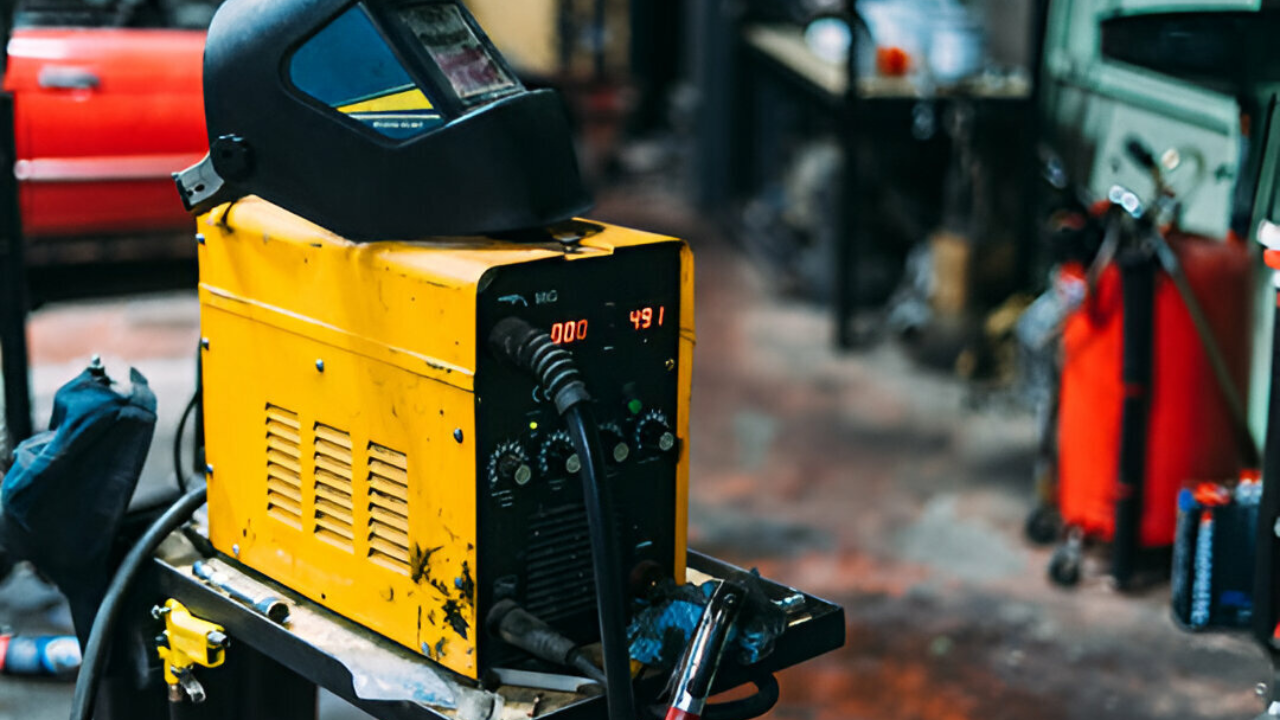Buying a chain block or hoist can be tedious if you do not clearly understand how they work, their best features, and what to look for. To save you the stress, we reviewed some of the chain blocks available in Australia and compiled a list of the best for every project and budget.
We also discuss chain blocks and provide all the necessary information before purchasing. Hopefully, this well-researched guide will help you find a suitable chain block or hoist for your project.
Our Top Picks
While we shortlisted the best chain blocks in Australia to six, here are our top three picks for a quick purchase:

Torin Manual Hand Lift Steel
Best chain block for industrial use with a load capacity of 1 ton, a mechanical load brake, and a high-quality 20Mn2 alloy steel build.

SPECSTAR 10 Feet Chain Block
Best chain block for workshops with a load capacity of 1.25 tons, a mechanical load brake, and a high-quality 20Mn2 alloy steel build.

Happybuy Lift Lever
Best cheap chain block for loads with a weight capacity of 0.75 tons, a lifting distance of 5ft, and a built-in mechanical brake.
Top 6 Chain Blocks for Australians
Our tests and evaluation of the best chain blocks in Australia considered various factors such as performance, durability, safety features, and overall user satisfaction. Here's everything we found.
1. Torin Manual Hand Lift Steel
Best Chain Block for Industrial Use

Torin's manual chain hoist has a 1-ton load capacity and a mechanical load brake for precise and controlled operation. Its 1/4-inch-diameter chain is made from high-quality 20Mn2 alloy steel, which features a black oxide coating that protects against corrosion and dirt. The hoist has load distribution wheels, two heavy-duty steel hooks, and a locking mechanism that rotates 360 degrees for flexibility and secure load handling.
The hoist’s rotating components are mounted on ball bearings to maximise efficiency and minimise friction. This makes it an excellent choice for demanding environments, including construction sites, factories, garages, warehouses, workshops, farms, mines, and shipyards. It is built to withstand heavy-duty use and provides dependable performance in a wide range of settings. It also meets the ASME B30.16 safety standards for hoists.
The manual chain hoist ships with a one-year warranty, ensuring quality and protection against defects. Its well-engineered design, safety compliance, and strong build make it invaluable.
Pros
- 1-ton load capacity
- High-quality alloy steel chain
- Load distribution wheels
- Suitable for industrial use
Cons
- 1-year warranty
2. MYOYAY 3/4 Ton Chain Lever
Best Value Chain Block

The MYOYAY Lever Lock Chain Hoist has an aluminium alloy steering wheel for dragging or lifting. Its maximum weight is 3/4 ton (750 kg), which is more than adequate for industrial use and application. The hoist is simple to construct, small, and easily transported.
The cable has a unique non-slip textured rubber coating, is ergonomic, and requires less force to operate. The 6 m chain structure makes this hoist more flexible. The chain has a load capacity of 0.75 T, a length of 6 m, and sufficient tension and resistance to cause deformation.
MYOYAY's premium brake makes it more stable and safer. It also helps prevent lifting when the load exceeds the rated capacity, boosting safety and avoiding damage. Due to its regularity, you can use the chain hoist operator to lift goods and transport loads in construction, transport, and other areas. It is also excellent for use in garages, workshops, and factories.
Pros
- 750 kg weight capacity
- Simple construction, easy to transport
- Non-slip textured rubber coating
- Versatile use
Cons
- Ratchet system can be stronger
3. SPECSTAR 10 Feet Chain Block
Best Chain Block for Workshops

SPECSTAR's compact hand-lift chain is made from high-quality steel alloy and can handle a maximum weight of 1.25 tons (2,755 kg). The chains are crafted from durable 20MN2 steel, ensuring strong support. The steel alloy hand chain is mounted on a sturdy crane, while the heavy chain is heat-treated and forged with steel cutters to enhance its durability and reliability.
The chain block includes a mechanical load brake for safe and precise operation. The steel gears help ensure smooth handling while minimising maintenance and repairs. SPECSTAR's hoist is designed for efficiency and durability, making it a reliable tool for most Australian workshops.
Meeting ASME B30.16 standards, the hoist features a specially designed hook that securely attaches to the chain. The hook is made from fully forged steel, providing extra strength and stability. This design ensures long-lasting performance in demanding work environments.
Pros
- 1.25-ton weight capacity
- High-quality construction
- Steel alloy hand chain
- Mechanical load brake
Cons
- Lift chain occasionally binds
4. VEVOR Hand Chain Hoist
Best for Heavy-duty Tasks

The VEVOR Hand Chain Hoist is best for lifting heavy loads to 3 tons (2,993.71 kg) with a 10 ft (3 m) lifting height. Made from industrial-grade steel, it is strong, durable, and resistant to impact and oxidation. The G80 galvanised manganese steel chain ensures excellent corrosion resistance.
VEVOR's chain hoist has a dual-pawl brake system for enhanced load security. The 360° rotating hook makes positioning and lifting items much easier and prevents twisting or bending during use. Likewise, the guided-type leading chain device ensures smooth operation, eliminating the risk of chain jamming. It also features a hardened steel cover that protects the internal components.
The tool's compact design makes it easy to store and transport, making it ideal for professionals and DIY enthusiasts, whether you're working in a warehouse, shipyard, or construction project.
Pros
- 3-ton lifting capacity
- Durable industrial-grade steel build
- Reliable dual-pawl brake system
- Smooth chain operation
- 360° rotating hook
Cons
- Limited to 10 ft lift
- Chains rust if not maintained
- Not for frequent lifting
5. Performance Tool Chain Hoist
Best Chain Block for Home Use

The Performance Tool chain hoist is designed specifically for engine tool maintenance. It can support up to 1 ton (1,000 kg) of weight and has a lifting distance of 8 feet. However, we recommend not using the device for any weight above 800 kg to preserve its durability.
The chain block is excellent for minor to moderate use cases or home duties. It features three industrial gears for positive positioning, a heat-treated bushing, and bearings for smooth operation.
Performance Tool's chain hoist weighs 9.75 kg, making it exceptionally lightweight. As a result, the build material of the Performance Tool chain block feels a bit cheap in quality. It makes up for this with its mechanical brake functionality and yellow powder-coated finishing for longevity and durability. It also includes a ¼-inch thick diameter chain.
Pros
- Simple hoist design
- Suitable for minor to moderate use
- Three industrial gears
- Mechanical brake functionality
Cons
- Not for weights above 800
- Build material feels a bit cheap
6. Happybuy Lift Lever
Best Cheap Chain Block

The Happybuy Lift Lever Block Chain Hoist can lift 0.75 tons and has a lifting distance of 5 feet. It features a 5/16" thick block diameter made from durable Alloy Steel G80. The hoist includes a built-in mechanical brake for added safety, preventing accidental drops while lifting.
The chain hoist, with its built-in gearing system and one-hand operation, is designed for ease of use. Additionally, it comes with two heat-treated, forged steel eye hooks with safety latches to securely hold loads and create a safer work environment. Despite its tough steel construction, the hoist remains lightweight and functions efficiently in high and narrow spaces.
Happybuy's hoist is corrosion-resistant due to its high-quality materials and well-engineered build, ensuring durability in different working conditions. However, proper care and maintenance are recommended to prevent early wear and damage, especially in humid environments.
Pros
- Built-in mechanical brake
- Alloy steel G80 construction
- Corrosion-resistant
Cons
- Requires careful maintenance
What is a Chain Block?
A chain block is a mechanism for lifting and lowering heavy loads using a chain. It has two wheels around which the chain is wrapped.
When you pull the chain, it wraps around the reels, beginning to lift an object attached to the rope or chain with a hook. You can attach chain blocks to lifting straps or chain bags to lift the load more evenly. The chain block includes a hand chain and a bracket.
How Do Chain Blocks Work?
Most chain blocks use motors, but you can also use manual chain blocks. First, you must connect the chain block to the load using the clamp. Pulling the hand chain strengthens its grip around the wheel and creates an inside loop in the mechanism, causing the tension to lift the load off the ground.
Because of their carrying capacity, workshops often use chain blocks to remove car engines easily. Since only one person is needed to operate a chain block, chain blocks are remarkably efficient.
Chain blocks can be used on construction sites to lift heavy loads at the highest level, in assembly-line factories to lift heavy objects on a belt and vice versa, and sometimes even to lift cars on dangerous terrain.
What is the Difference Between a Chain Block and a Chain Hoist?
Chain blocks are suitable only for vertical lifting and may lock up if used laterally or horizontally. In contrast, lever hoists can lift loads horizontally and vertically in various positions, allowing for tightening and tying cargo during transportation.
Most chain blocks operate manually, using internal gears and a chain. The operator pulls a hand chain, turning the pulley mechanism to move the load. A hook at the end of the chain attaches to the item, while an upper hook connects to a support.
On the other hand, a chain hoist has a lever handle, internal gear, and ratchet system on the chain block side. The lever lock activates the ratchet, allowing the load to move up or down by turning a crank. The lifting chain has a hook for attachment and a clip securing it to the lever hoist housing.
Chain hoists come in manual or electric forms, lifting 250 kg to 20 tons at heights of 3 to 6 metres. In contrast, lever hoists have standard lengths of 3 or 1.5 metres, with load limits ranging from 250 kg to 9 tons, although other sizes and capacities may be available upon request.
How to Choose the Right Chain Block?
Here are some factors to consider when deciding on a chain block.
Tip #1. Lifting Capacity
The biggest mistake is entering the chain block arena without knowing your lifting needs. Generally, a block's lift capacity ranges from 250 kg to 20 tons. First, determine the capacity requirements regarding your needs to understand which chain block fits your needs. You can find chain blocks with 50 tonnes or more capacity. Choose the ability of your chain block based on the weight of the heaviest object you plan to lift.
Tip #2. Lifting Distance
As a rule of thumb, measure the height of the lift before committing a purchase. Ensure that the lift chain's size matches the lift height and that the hand chain is roughly two feet shorter than the lift chain length.
For instance, if the lift chain block is approximately 20 feet long, the hand chain should be around 18 feet. However, you can keep the lift chain longer than its size. Chain blocks, in particular, contain methods for determining whether the length meets your needs.
Tip #3. Interchangeable Parts
If you are looking for long-term use rather than just short-term performance, always check that changing the chain block's standard parts is possible easily. It may seem insignificant now, but wear is inevitable.
These replaceable parts allow for quick repairs and a quick return to regular operation. Standard parts also guarantee easy replacement—if you choose a standard chain block with interchangeable spare parts, you can replace them anytime.
Tip #4. Trolley Mounted or Fixed Mounted
You can choose a fixed bracket (mounted on the hook) or a chain mounted on the trolley. Assembled trolleys are helpful when moving the load on the beams. Hook latches are helpful when the blocks remain static in one place for a long time. Talking to gear sales experts can help you clarify your doubts and questions about the best option.
Tip #5. Build Material & Features
The chain block loading chain must be made of grade 80 alloy steel. When buying a chain block, the most important thing is to check that the load chain is not welded.
We recommend choosing chain hoists with a factory-installed overload protection system, especially if you are unsure of the weight of the objects you will be lifting or pulling.
Also, choose a chain hoist with the most effective spur gear mechanism, offering greater load capacity with little effort. Ensure the lifting wheel housings are deep enough for the chain space to move smoothly, freely, and without obstacles.
Tip #6. Budget & Warranty
Always consider your budget when purchasing equipment. However, do not be short-sighted; buy the cheapest and expect the best.
You must also ensure that your service provider is fully supportive regarding experience and parts if something goes wrong. One way to get this is to check whether your supplier is an OEM or an official product distributor. Also, be sure to check the product terms and warranty period.

Conclusion
Chain blocks are available in varying shapes and sizes and are suitable for various functions. They consist of a lifting chain, a one-hand chain, and hooks. You can operate them manually or electronically.
Choosing the right chain block unit is not straightforward, but we hope you can now make a better and more intelligent decision. Consider the above crucial factors before ordering chain hoists for your specific needs. And remember to follow the manufacturer's instructional manual to avoid injury or damage when operating a chain block.








